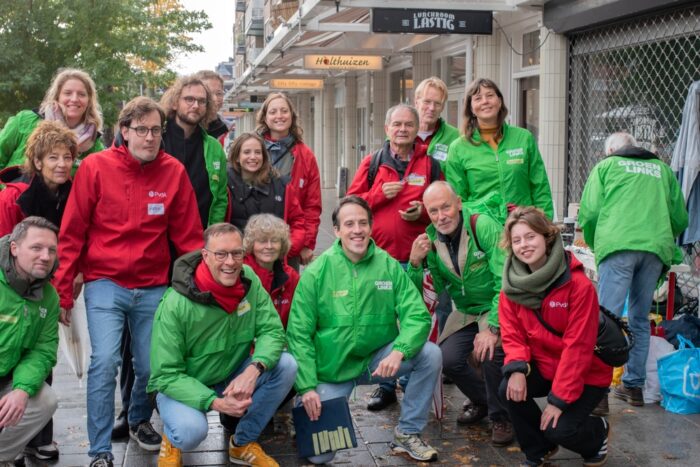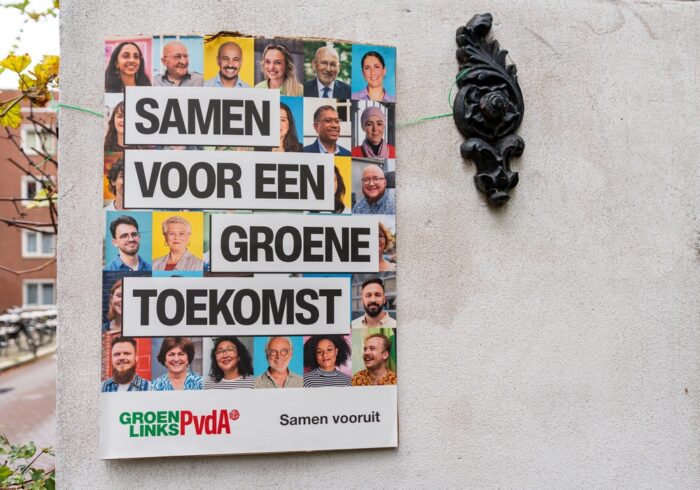The Progressive Post
Elections in Switzerland: business as usual?

Switzerland has long been considered a laboratory for partisan trends in Europe. As election results here are less influenced by the dynamics of government and opposition than it is the case elsewhere, they reflect more closely the social shifts in the electorates and their attitudes. Thus, the transformation of the political system in Switzerland in recent decades has been trendsetting for Europe.
In Switzerland, the system became fragmented and polarised earlier than elsewhere: The rise of the radical right Swiss People’s Party (SVP) came long before the rise of other new far-right parties such as the PVV in the Netherlands, the Sweden Democrats or the AfD in Germany. It has been the strongest party in the country for 24 years and has replaced the established centre-right parties; since 2003 it has been part of the seven-member Federal Council with two representatives. The transformation of the Social Democratic Party (SP) into a neo-left party concerned with environmental protection and migration also happened earlier than in most other countries. As early as the 1980s, it decided not to swing to a left-conservative course but instead to incorporate the concerns of social movements. Despite the rise of new progressive forces – the Greens and Green-Liberals – it was able to stop the decline of voters early on.
Two dominant poles have emerged in the party spectrum around which political identities are formed in Switzerland: a left-liberal pole and a right-wing national-conservative pole. The regrouping of the electorate has long since taken place: higher educated, urban people tend to vote progressive; lower educated and lower income groups tend to vote more conservative, especially in the countryside.
The election of 22 October 2023 confirms this trend, with the poles solidifying: the radical right SVP remains the strongest party in Switzerland, gaining 3 per cent and making up part of its heavy losses from 2019. The leftwing SP (+1.2 per cent) made slight gains, widening its gap to the following parties. It remains the strongest force in the left camp. While the formerly established centre-right parties, ‘The Centre’ (formerly known as Christian Democratic People’s Party, CVP) and ‘The Liberals’ (FDP), have now levelled off at under 15 per cent, the ecological forces suffered losses: ‘The Greens’ (-3.8 per cent), whose program is almost identical to that of SP, and the centre-left Green Liberal Party (-0.6 per cent). Despite the SVP’s apparent electoral victory, a medium-term perspective throws the figures into relief: the SVP parliamentary group in 2023 is almost as strong as in 2015 (67 seats), while the Left has gained from 54 to 64 seats over the same time. The two centre-right parties have been weakened and are losing influence. Overall, the national parliament (lower house) has become more left-wing and progressive in the last 8 years.
What conclusions can be drawn from this for the development of partisan politics in Europe?
1) Consolidation: Almost all European party systems are moving towards a situation with five to seven parties, each with plus/minus 10 to 20 per cent of the electorate. If the current party landscape in Switzerland is stabilising, this is also of interest for the development of party politics in other European countries. In the five national elections between 1995 and 2011, the SVP turned the right upside down, the political centre split, and the Greens established themselves as the second left-wing power alongside the SP. This phase of change and fragmentation has come to an end in Switzerland. A new, identity-based line of conflict is restabilising the system: the socio-political line of conflict between openness, universalism, and internationalism on the one hand and national-conservative traditions that need to be preserved on the other. The question is, can such a polarised political system tackle today’s major challenges – climate change, social inequality, and public health?
2) Normalising the radical right: Switzerland has a long experience in dealing with radical right parties. For 24 years, SVP has won elections by mobilising almost exclusively on the socio-political dimension: with issues such as migration, the protection of the ‘Heimat’ (homeland) and the defence of a national-conservative lifestyle. Since the 1990s, it has been elected explicitly as the antithesis of progressive social movements. This year’s campaign strategy gives a foretaste of the radical right’s European election campaign in 2024.
Among the party’s proposals was a bid to cap the country’s population, now at 8.8 million, to 10 million by 2050, citing concerns over the protection of nature and overstretched infrastructure. Housing shortages, rising rents and living costs, crowded commuter trains and environmental pollution – all the country’s problems are linked to alleged ‘mass migration’. The normalisation of radical right-wing positions is well-advanced in Switzerland. The Federal Commission Against Racism accused the SVP of running a ‘xenophobic’ campaign following social media adverts that sought to stoke fears about migrants. The posts showed bloodied knives, hooded criminals, bruised faces, and frightened women, accompanied by the question of whether this could be the ‘new normal’. This normalisation is also the result of a failed policy of the centre-right parties (hello German CDU!). They have moved to the right for years in the hope of gaining votes from the SVP. The outcome: with every election, the centre-right parties lose votes to the radical right. On Sunday, FDP lost every seventh vote to the SVP, resulting in one of their worst results ever. The adoption of SVP statements and positions on migration by centre-right parties, but also by the dominant media, has generally led to a weakening of the taboo against the expression of anti-migration sentiment in the public sphere. The elections 2023 showed once again that when there is a lot of talk about the issues of the right (e.g. migration), the right wins.
3) A rejuvenated Social Democracy: SP Switzerland managed to accomplish something that many social democratic parties in Europe fail to do: renewal. While many SD parties in Europe are struggling with the ageing of their electorate, SP managed to win over young people, especially in urban areas, in recent years. In this year’s elections, it won 20 per cent of the under-30s, and among young women it is the strongest party by a wide margin. In urban areas it achieved record results: almost 38 per cent in Bern, 34 per cent in Zurich and Basel, 33 per cent in Lausanne. This success, especially among young, urban and more highly educated voters, is the result of a consistent focus on issues that are important to young people on the left, without neglecting the old bread-and-butter issues. Today, the SP is clearly positioned not only in the area of social or economic policy, but also in integration and gender equality policy, and it enjoys a high degree of credibility. While SP is gaining support mostly in metropolitan regions in the French and German-speaking parts of the country, it is also gaining support in more rural areas in the French part. The party’s main challenge will be to find a means to mobilise more voters outside of the German-speaking cities.
Photo credits: Shutterstock.com/ Yingna Cai




